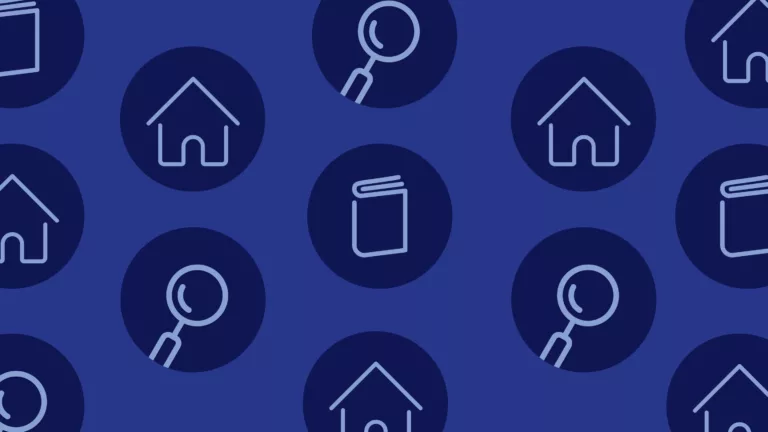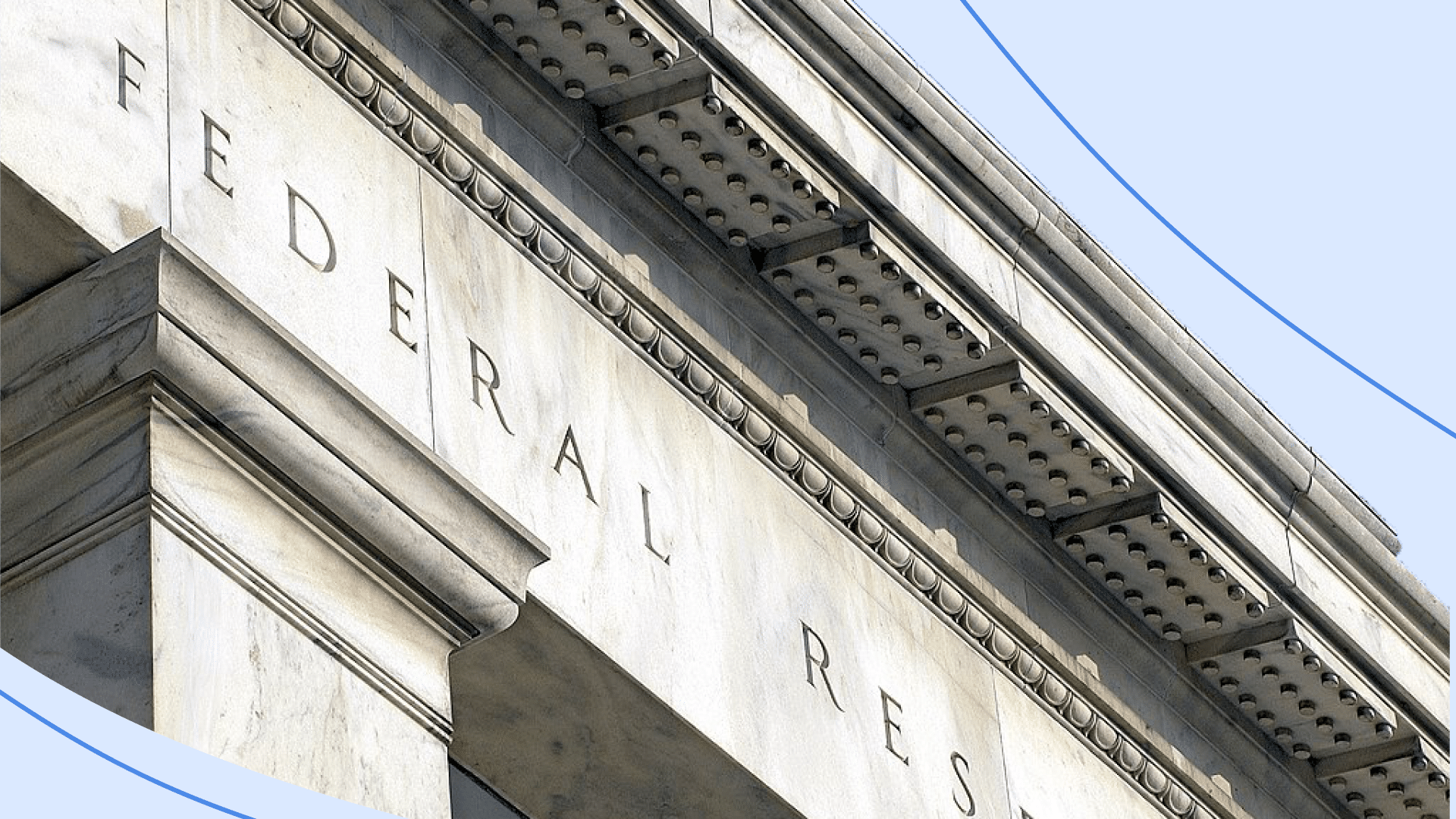Getting a mortgage may seem like a complex task with many layers and steps involved. However, the first step to breaking down the process involves answering the most basic question: “What is a mortgage?” Understanding the very basics of mortgages may help you gain more confidence as you search for your dream home.
We’ll walk you through various mortgage options and take you through a quick step-by-step guide to get a mortgage. We’ll even break down some common misconceptions about mortgages.
What is a Mortgage?
A mortgage is a loan agreement between you and a lender secured by the home or dwelling backing the loan. You agree to the terms of a mortgage loan and a lender agrees to lend you money for a mortgage. Also called “mortgage loans,” a mortgage allows you to obtain a home without having to pay the total purchase price upfront.
Let’s go through a few common mortgage terms you’ll encounter when you’re ready to get a mortgage:
- Amortization: Amortization simply involves the process of paying off debt with regular payments you make over time. An amortization schedule shows you how much you’ll pay over time, including the principal and the interest on the account. You can see how interest payments will become smaller and smaller as time goes on when you look at your amortization schedule. More of the payment goes toward the principal balance as time goes on.
- Pre-approval: When you get a mortgage pre-approval, your lender confirms your ability to pay for a loan without actually extending a mortgage loan. You may undergo a credit check, submit income information and more. This helps you understand how much house you can qualify for and the types of mortgages available to you.
- Closing costs: You pay closing costs to your lender so they can create/originate and close your loan, as well as for the title, recording fees, transfer fees, property taxes and more. Closing costs cover things like your home appraisal, searches on your home’s title, and property taxes. The amount you pay in closing costs depends on the type of loan you get and where you are purchasing.
- Loan term: A loan term is the amount of time over which you will repay your loan.
- Annual percentage rate (APR): An annual percentage rate (APR) gives you a more comprehensive overview of how much you’ll owe both upfront and over the life of the loan, expressed as a percentage. The APR includes the cost of the interest rate plus any points, mortgage broker fees and closing costs.
- Mortgage insurance: If you choose to make a down payment of less than 20% of the purchase price of your new home, you will need to pay for Private Mortgage Insurance (PMI). You must also pay mortgage insurance on FHA and USDA loans.
- Escrow: Escrow refers to a third party that holds money or an asset on behalf of the other two parties in a real estate transaction.
- Earnest money: You can put down earnest money, also called a “good faith deposit,” before closing on a house. This demonstrates your purchase commitment and goes toward your down payment.
- Equity: Equity is the amount of the home that you own. It can also be thought of as the difference between what you owe on your mortgage and what your home is currently worth. For example, if you owe $50,000 on your mortgage loan and your home is worth $200,000, you have $150,000 of equity in your home.
- Deed of trust: The deed of trust sets your property up as collateral for the mortgage. In other words, you allow your lender to take away your home if you fail to make your payments.
- Title: The primary title document shows who owns the home and any other liens on the title. A lien exists to secure financial payment for a debt. If a borrower doesn’t make payments, the creditor can seize the property.
- Promissory note: The promissory note legally obligates you to pay the mortgage and includes information about what will happen if you fail to make your mortgage payments.
- Mortgage note: The mortgage note outlines the details and terms of your loan (including the rate, term, down payment amount, monthly payment and more).
Remember, these definitions represent a small slice of the broad range of factors you need to consider when getting a mortgage. However, they provide a solid foundation to understand some mortgage basics. We’ll use these terms throughout this article.
Differences Between a Loan and a Mortgage
A mortgage is a type of loan. However, the difference between a mortgage and say, a personal loan, means that you put your home up as collateral for a mortgage. This means that the bank can take your home away if you stop making your monthly mortgage payment.
Who Can Qualify for a Mortgage?
A lender considers many factors when deciding whether you qualify for a mortgage. Lenders consider your income, debt, credit score, assets and more. Anyone can qualify for a mortgage who meets the basic lender requirements. We’ll go over those more in-depth below.
Parties Involved in a Mortgage
The mortgage process involves two main parties: a lender and a borrower. The underwriter also takes part in this process.
- Lender: A lender’s role in the homebuying process includes lending money for individuals to buy property. Banks, credit unions or private individuals can all qualify as lenders.
- Borrower: The borrower is the person who needs to borrow money from a lender. Borrowers go through several distinct steps in the mortgage process: pre-approval, house shopping, mortgage application, loan processing, underwriting and closing.
- Underwriter: The underwriter reviews the rules and guidelines and verifies that a borrower meets the requirements. Underwriters review the borrower’s credit history and capacity to repay the loan.
Other individuals will participate in the mortgage process as well.
How Does a Mortgage Work?
Put simply, the mortgage process occurs when a lender gives you money to buy a home. You pay this loan back with interest over time, within a specified timeframe. You own your home completely once you pay off the mortgage.
Take a look at the details below to learn the exact steps you’ll take to get a mortgage.
How Can You Qualify for a Mortgage?
When you want to qualify for a mortgage, you may feel as if your lender needs to know everything about you. However, your lender needs to determine that you are a good candidate to borrow money and often needs to show other parties involved in your mortgage after closing that you qualify for those loan programs they plan to buy or back (such as government-sponsored enterprises and investors). Therefore, they will consider your:
- Income: They consider your household income to determine whether you have enough money to make mortgage payments. This will include other income, such as military allowances, side hustle income, alimony or child support, investment income and more.
- Assets: Your lender wants to know that you have extra savings to cover your down payment and closing costs. They also want to make sure you can pay your mortgage in case of emergency. Your assets may include the money in your savings and checking accounts, certificates of deposit (CDs), investments such as stocks and bonds and retirement accounts.
- Credit score: Your credit score is a three-digit number between 300 and 850 that evaluates how well you pay back your debts. The FICO/credit score used for mortgages is just one of many different types of credit scores. A high credit score will give you access to the largest selection of loan types and the lowest interest rates. You typically need to have a credit score of at least 620 to qualify for a conventional mortgage, though government-backed mortgages may require you to have at least a 500 credit score.
- Debt-to-income ratio: Your debt-to-income ratio (DTI) is a percentage that tells lenders how much of your gross monthly income goes toward your monthly obligations or liabilities. You can add up the fixed payments you make each month, then divide them by your total pre-tax income. The lower your DTI, the more a lender looks favorably on you. You want to shoot for a DTI of 50% or less when you’re on the hunt for a mortgage.
- Down payment: When you make a down payment, you pay a percentage of your home’s purchase price upfront when you close on your home loan. Some types of home loans don’t require you to make a down payment.
- Mortgage reserves: Your mortgage reserves refer to money you use as a backup (not your regular income) or emergency funds that you can tap into if you lose your job or your source of income.
Your lender may consider other aspects of your overall financial picture as well. Ask your broker or lender for more details and provide information to your lender as soon as possible.
Types of Mortgages
As you take a look at the following mortgages, remember that your broker or lender can help you decide which type of mortgage works best for you. Take a look at the following mortgage types.
Adjustable-Rate Mortgage (ARM)
Adjustable rate mortgages (ARMs), often called variable-rate mortgages or floating mortgages, refer to a type of mortgage in which the interest rate varies throughout the life of the loan. The initial mortgage rates remain fixed for a period of time. For example, in a 3/6 ARM, the mortgage holds a fixed rate for three years and a rate adjustment follows every six months (indicated by the 6 in 3/6.) The variable interest rate depends on the benchmark interest rate. Adjustable rates work well for people comfortable with the potential higher interest rates, and some lenders put caps on how high the rates can go. Homeowners who don’t plan to stay in the home loan may also want to explore an ARM.
Fixed-Rate Mortgage
Fixed-rate mortgages carry a fixed interest rate for the entire loan term. Loan terms usually range between 10 and 30 years. Borrowers who like to know their mortgage payments from month to month might find fixed-rate mortgages appealing.
FHA Loans
The Federal Housing Administration (FHA) backs, or insures, FHA loans. First-time borrowers who have credit challenges or less in savings may want to consider a FHA loan. FHA loans require at least a 3.5% down payment and a credit score of 500 or higher. You may be required to pay a mortgage insurance premium (MIP) for the entire duration of your FHA loan. This is unlike a conventional loan where PMI drops off after you reach 80% equity.
VA Loans
Mortgage lenders can issue VA loans to qualified veterans, active service members and spouses through backing by the Department of Veterans Affairs (VA). VA loans do not require a down payment, and the VA doesn’t specify a specific credit score for qualification.
The VA insurance allows lenders to issue loans to potentially risky candidates. Note that there is a VA funding fee associated with VA loans.
Conventional Loans
The U.S. government does not directly back conventional loans. These loans fall into two types of categories: conforming and nonconforming.
Conforming loans fit the requirements to be sold to Fannie Mae and Freddie Mac, two government-sponsored enterprises that buy loans from lenders. The 2022 limit for a conforming mortgage on a single-family home in most parts of the country is $647,200, with a higher ceiling for areas with especially high housing costs.
Nonconforming loans, on the other hand, don’t meet Fannie Mae and Freddie Mac guidelines and requirements. You’ll need to carry a credit score of at least 620 to qualify for a conventional loan based on Agency guidelines.
USDA Loans
USDA loans are another government-backed option backed by the U.S. Department of Agriculture. Borrowers must live in a qualifying rural area and meet specific income requirements may qualify for USDA loans.
The Mortgage Process
In general, the mortgage process to purchase a home works like this:
Step 1: Get preapproved for a loan.
A pre-approval letter from a mortgage broker or lender shows how much money you are qualified to borrow. A pre-approval letter also shows the seller that you have a strong case for purchasing the home.
Step 2: Choose a lender.
You can choose the lender who pre-approved your mortgage or you can choose a different lender that offers a different interest rate or the type of mortgage product you want. Look into various lenders’ rates and fees and ask about the types of loans you qualify for.
Step 3: Complete an application.
Next, complete the lender’s mortgage loan application. You may need to provide the following information and more:
- Your basic information
- Employment information
- Monthly income
- Assets and liabilities
- Bank statements
- Tax documentation
- Proof of Identity
Step 4: Review your Loan Estimate.
You will receive a three-page Loan Estimate, typically as part of a larger initial disclosure package, within three business days of submitting your application. Your Loan Estimate includes information about your estimated interest rate, monthly payment, total closing costs, taxes, insurance and how the interest rate and payments may change in the future.
Step 5: Have the home appraised.
During the underwriting process, your lender will want an appraiser to provide an independent estimate of the value of the home you’re buying. A professional appraisal lets you and your lender know that you’re paying a fair price for the home..
Step 6: Undergo mortgage processing and underwriting.
Next, the underwriter will review all documents. During this process, the underwriter looks for missing items and red flags in your application.
Step 7: Review the Closing Disclosure.
Next, you’ll review your Closing Disclosure, which should look like a more comprehensive version of your Loan Estimate. The Closing Disclosure confirms all the costs involved with your mortgage and paying off your mortgage loan. Make sure no mistakes exist on your Closing Disclosure. You should receive your Closing Disclosure at least three days before closing on your mortgage loan.
Step 8: Attend the closing.
Finally, you’ll attend the closing. You’ll need to provide and/or sign the following (if you haven’t already provided it to your lender): proof of homeowners insurance, Closing Disclosure, the loan application, the mortgage note, the deed of trust, the initial escrow statement, title documents and the deed.
You may also attend a virtual closing through e-signatures and digital notarization.
Once you complete these, you’re a homeowner! (Pat yourself on the back.)
Common Mortgage Misconceptions
Did you ever think that due to your tarnished credit or lack of down payment that you might not be a good candidate for a mortgage? Don’t write yourself off yet! Take a look at a few of these common mortgage misconceptions:
- Your credit score needs to be perfect to get a mortgage. This is simply not true. You can get a mortgage with a credit score as low as 500. In addition, many more factors go into your ability to get a mortgage beyond your credit score. Review the list of things your lender will check from above!
- You need at least 20% for a down payment. Also false! You can still get a mortgage with a down payment less than 20% However, you will pay private mortgage insurance (PMI) until you reach 20% equity in your home. You can ask your lender to cancel PMI when you’ve reached this threshold..
- Getting pre-approved means you will get a mortgage. Unfortunately, this is also false. While a pre-approval is a good sign that a lender would like to lend to you, the underwriter will go deeper to investigate everything you bring to the table. Potential borrowers sometimes throw up red flags when the underwriting process gets underway. It’s important to disclose everything upfront so your lender can get the most accurate picture of who you are as a borrower.
Get Mortgage Help with Morty
Whether you want to get your pre-approval letter or get personalized loan options, schedule a consultation with our trusted Morty specialists to get the process underway. We’ll make the process simpler and faster.
This post was updated on Feb. 11, 2022 to reflect the FHFA’s current conforming loan limits.






